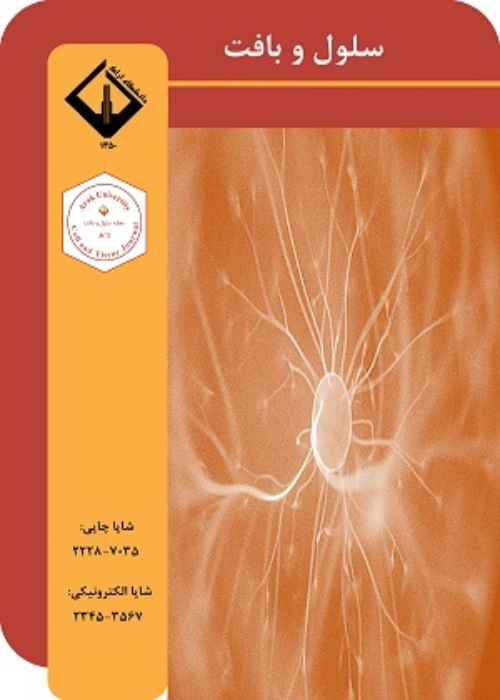Polycaprolactan/ tragacanth nanoscaffold enriched with sililymarin as a protector of neural progenitor cells under oxidative stress conditions
Tissue engineering refers to methods that are based on the use of scaffolds, cells and biologically active molecules to produce tissues with specific functions. The purpose of tissue engineering is to build structures that can regenerate, maintain and improve damaged tissue or the whole organ. Today, by using tissue engineering methods, various natural and synthetic scaffolds have been designed that can be used for nerve grafts. The physical, chemical and biological properties of the scaffold must be similar to the extracellular matrix of the body in order to avoid adhesion, growth and support the differentiation of cells. An ideal neural scaffold should have biodegradability, biocompatibility and proper tensile strength. Recently, the use of polycaprolactan as a suitable biodegradable material has been evaluated in many fields of tissue engineering. Antioxidants are among the substances, which seem to be able to prevent neuronal death by reducing the amount of ROS. Flavonoids include many compounds that have various biological effects in the body. Silymarin (Silybum marianum) is a flavonoid that has many effects, including anti-cancer effects and antioxidant properties. Tragacanth is a known natural polymer that has excellent biological properties such as biodegradability, biocompatibility, antibacterial and wound healing ability. It is obtained from the stems and branches of the Asian species tragacanth. It has outstanding structural stability against heat and acidity. The aim of this study is to produce polycaprolactan/ tragacanth /silymarin nanoscaffolds and to investigate the viability of pc12 cells on the scaffold under oxidative stress. Considering that silymarin has antioxidant properties, the use of polycaprolactan/ tragacanth /silymarin nanoscaffolds can prevent neuropathy of nerve cells.
Scaffolds used in this research were prepared using the electrophoretic method. For this purpose, an electrospinning machine was used, which is equipped with a rotary collector with a thickness of 70 mm and a width of 50 mm. In order to prepare a polycaprolactan/ tragacanth nanoscaffold and load silymarin on it, a 7% polycaprolactan solution (dissolved in acetic acid), 0.7% by weight tragacanth solution (dissolved in acetic acid) and 0.9% by weight silymarin solution were mixed by a magnetic stirrer for 20 minutes, and in order to make the solution uniform, sodium didecyl sulfate (SDS) with a concentration 1 percent by weight of the solvent was added to the solution and the suspension was homogenized for 20 minutes with an ultrasonic device, then the scaffold was prepared by an electrospinning device. . The nanofibers were collected in a period of 6 hours, the sample collection speed was 1 ml per hour, and the nanofiber samples were collected by rotating at 250 rpm. The distance between the injection needle and the scaffold is 12 cm and this process is done at a voltage of 15 kV. The morphology of the scaffold was evaluated by scanning electron microscope (SEM) and the chemical structure of the scaffold was evaluated by FTIR spectroscopy. To investigate the antioxidant properties of the scaffold, glucose 80 mg/L and H2O2, 150 macro L were used.
Examining the morphology and chemical structure of the scaffold showed the proper porosity of the polycaprolactan/ tragacanth scaffold and the successful loading of silymarin on the scaffold. Evaluation of the oxidant properties of the scaffold after 24 hours of PC12 cell culture on it showed the increase in cell viability on the scaffold and the appropriate antioxidant properties of the scaffold.
The results of this research showed that the enrichment of polycaprolactan/ tragacanth scaffold with silymarin increased the proliferation and survival of PC12 cells under oxidative stress. Therefore, this scaffold can be a suitable candidate for tissue engineering in oxidative stress.
- حق عضویت دریافتی صرف حمایت از نشریات عضو و نگهداری، تکمیل و توسعه مگیران میشود.
- پرداخت حق اشتراک و دانلود مقالات اجازه بازنشر آن در سایر رسانههای چاپی و دیجیتال را به کاربر نمیدهد.


